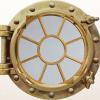Time To Update: "the Best Fountain Pen For Artists".
-
Forum Statistics
354.9k
Total Topics4.6m
Total Posts -
Member Statistics
128,006
Total Members18,857
Most OnlineNewest Member
Protezirov_unOn
Joined -
Images
-
Albums
-
Andrew Lensky Arts
- By Andrew_L,
- 1
- 19
- 37
-
USG 7
- By USG,
- 0
- 0
- 58
-
Txomsy's paraphernalia
- By txomsy,
- 0
- 4
- 23
-
OCArt #2
- By OCArt,
- 0
- 2
- 32
-
Swan Pen Tray Stand from store display
- By VacNut,
- 0
- 0
- 7
-


















.thumb.jpg.f07fa8de82f3c2bce9737ae64fbca314.jpg)



.thumb.jpg.331e554113c33fb39d5bf3233878978a.jpg)





Recommended Posts